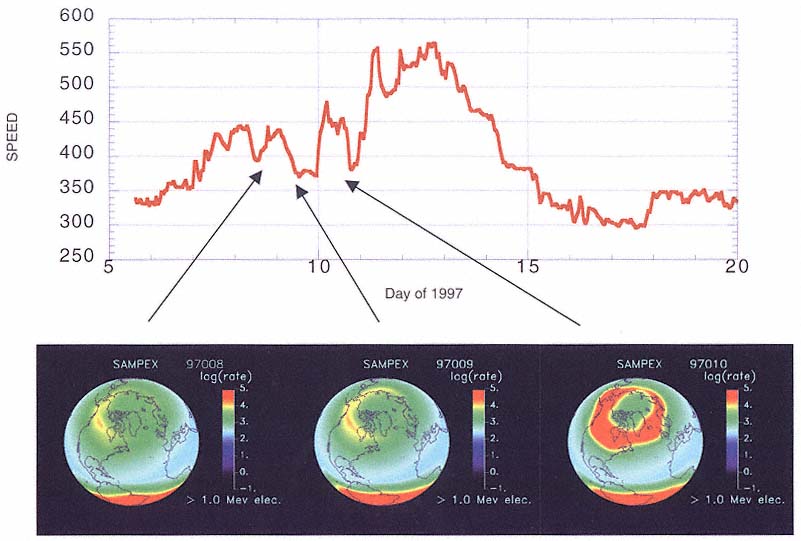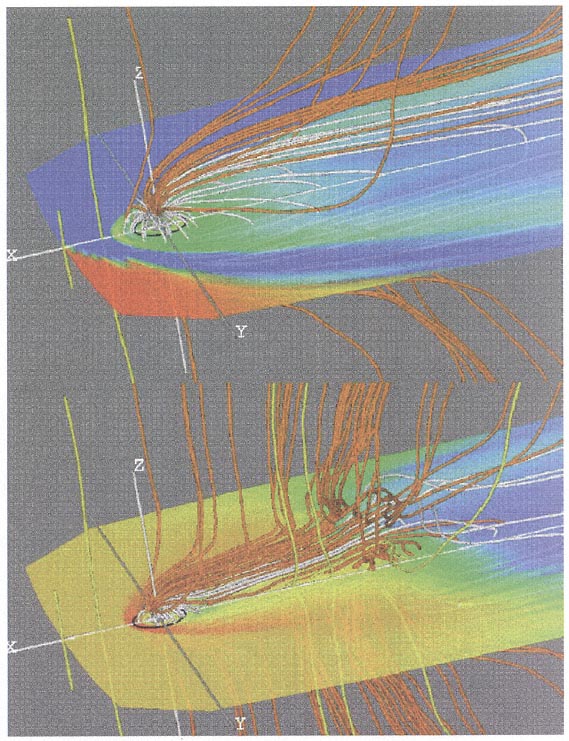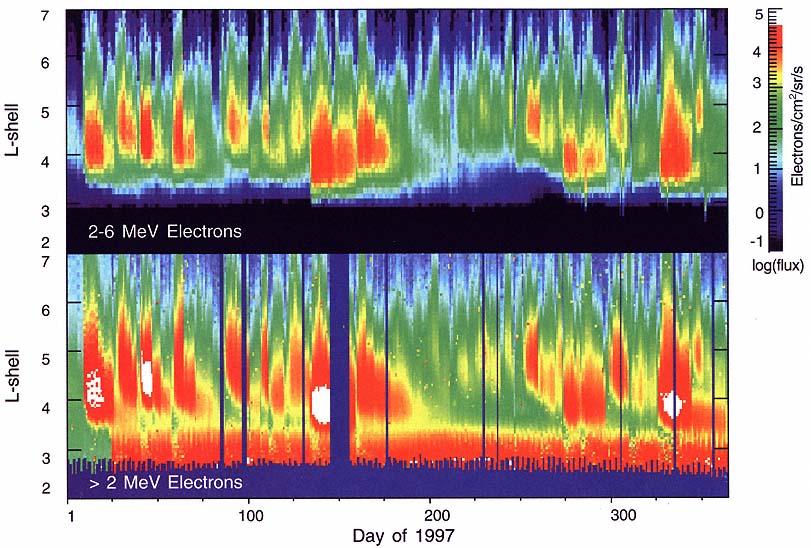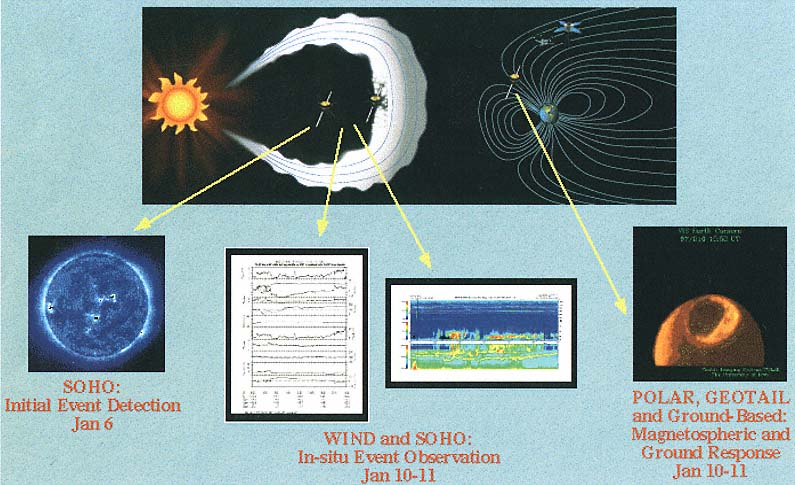
Plate 3 Top panel, solar wind speeds measured on SOHO during the January 1997 Sun-Earth Connection event. Bottom panel, SAMPEX measurements of radiation belt intensities at 600 km altitude. Notice the large increase in SAMPEX intensities on January 10, when a high-speed, high-density stream impacted Earth.

Plate 4 Global MHD simulation of the impact on the magnetosphere of the interplanetary shock wave of March 24, 1991, which violently compressed Earth's magnetosphere and rearranged the radiation belts. The top diagram shows the configuration just before the shock hit; the bottom one shows the configuration few minutes later, as the shock moved the magnetotail. Area colors indicate temperature in the equatorial plane. Colored lines are magnetic field lines.






